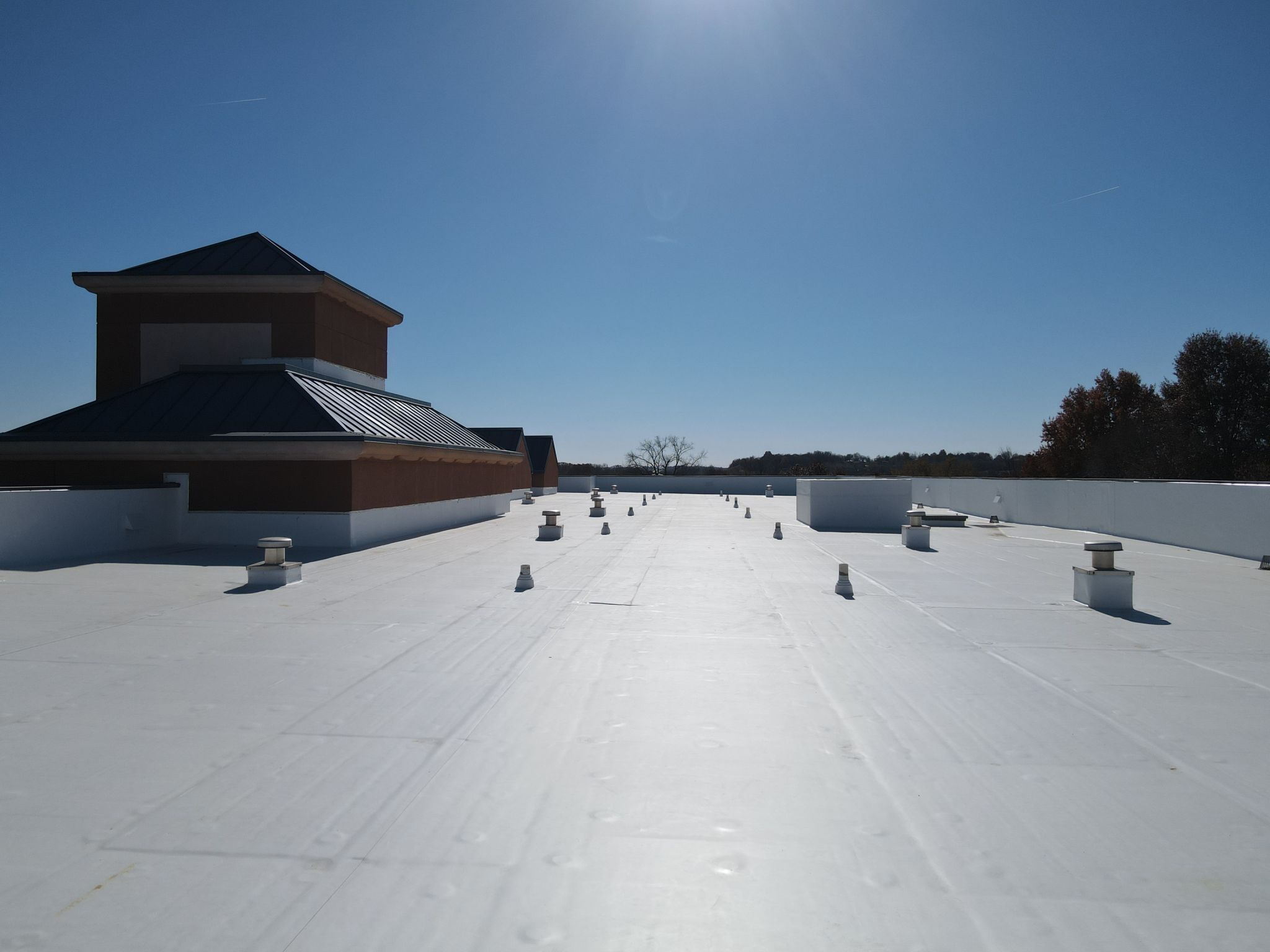TPO (thermoplastic polyolefin) is a single-ply roofing membrane common on buildings with low-slope roof systems. Since its introduction to the market in the early 1990s, TPO has become one of the most popular choices for commercial new construction and replacement applications.
TPO membranes are composed of a cap, or weathering layer above a base layer with a nylon reinforcing layer in between to add strength and tear resistance. TPO comes in a range of different thicknesses, typically 45mil, 60 mil, and 80 mil.
Here are a few of the benefits of TPO membranes:
- Energy Efficiency: With a traditionally white reflective membrane surface, TPO reflects UV rays and maintains a relatively cool temperature, potentially offering energy savings compared to darker-colored alternatives.
- Versatility: With a wide variety of installation methods and even colors, TPO roofing installations can be customized to fit virtually any
- Flexibility: TPO membranes are inherently flexible and resistant to cracking even after years of UV exposure, unlike PVC membranes for example, which contain added liquid plasticizers that tend to evaporate over time.
- Strength: TPO membrane seams are heat-welded together, offering greater strength and longevity than taped or adhered seams.
- Ease of Repair: Most repairs needed on TPO roofs are relatively simple, requiring only cleaning the affected area(s) and heat-welding new TPO patches
But not all TPO is the same in quality. There are several important factors that can vary, even comparing one 60 mil to another from different manufacturers.
We will go into detail on a few of these:
Thickness of Weathering Layer
The aforementioned weathering layer is the most important layer in determining life of the roof system, all else being equal. This layer determines the membrane’s ability to resist the elements over time, and ultimately the watertightness of the entire system.
It is commonly believed that the overall mil thickness of the membrane holds the most importance when it comes to projecting longevity of a roof system, but it is important to understand where that thickness comes from. A fairer comparison between different manufacturers is the thickness of the weathering layer, or “thickness above scrim.”
It has come to my attention recently that even the overall thickness of TPO membranes is permitted through ASTM testing to have up to a 10% variance, meaning that it is likely that there are rolls of TPO being sold today as 60mil rolls that in reality are only 55mils thick.
Welding Temperature Window
On a given roof system, all sheets of TPO and details are welded to each other using hot air. There is a specific temperature range that the material can support for a proper weld. This range can vary based on the composition of the TPO itself, in addition to other factors such as ambient air temperature. If one strays too high on welder temperature, the TPO will burn. Too low and the weld will not adequately form.
Some TPO manufacturers have a much narrower range of adequate welding temperatures than others. On a 1,000SQ+ project where cumulative installer fatigue may build, or during a time of year with widely fluctuating temperatures, this range can become a major factor in determining quality of installation. A more forgiving temperature window is preferred.
Long-Term Performance/Resistance to Weathering
While there is not a large-scale study yet available comparing the real-world longevities of TPO roof systems from different manufacturers, heat-aging/accelerated weathering tests have been able to simulate real-world conditions accurately in a lab-setting for this purpose.
Consider this study published in 2014, where rolls of TPO from different manufacturers experienced drastically different results in accelerated weathering tests. The study went on to provide a baseline of three distinct categories of performance for TPO membranes.
Summary
Hopefully this post provided a solid foundation of what TPO is and that the manufacturer of the material in some cases is just as important as the type of material itself in providing roofing solutions that last long-term.
To learn if a TPO roof system may be a good fit on your building, please don’t hesitate to reach out!


